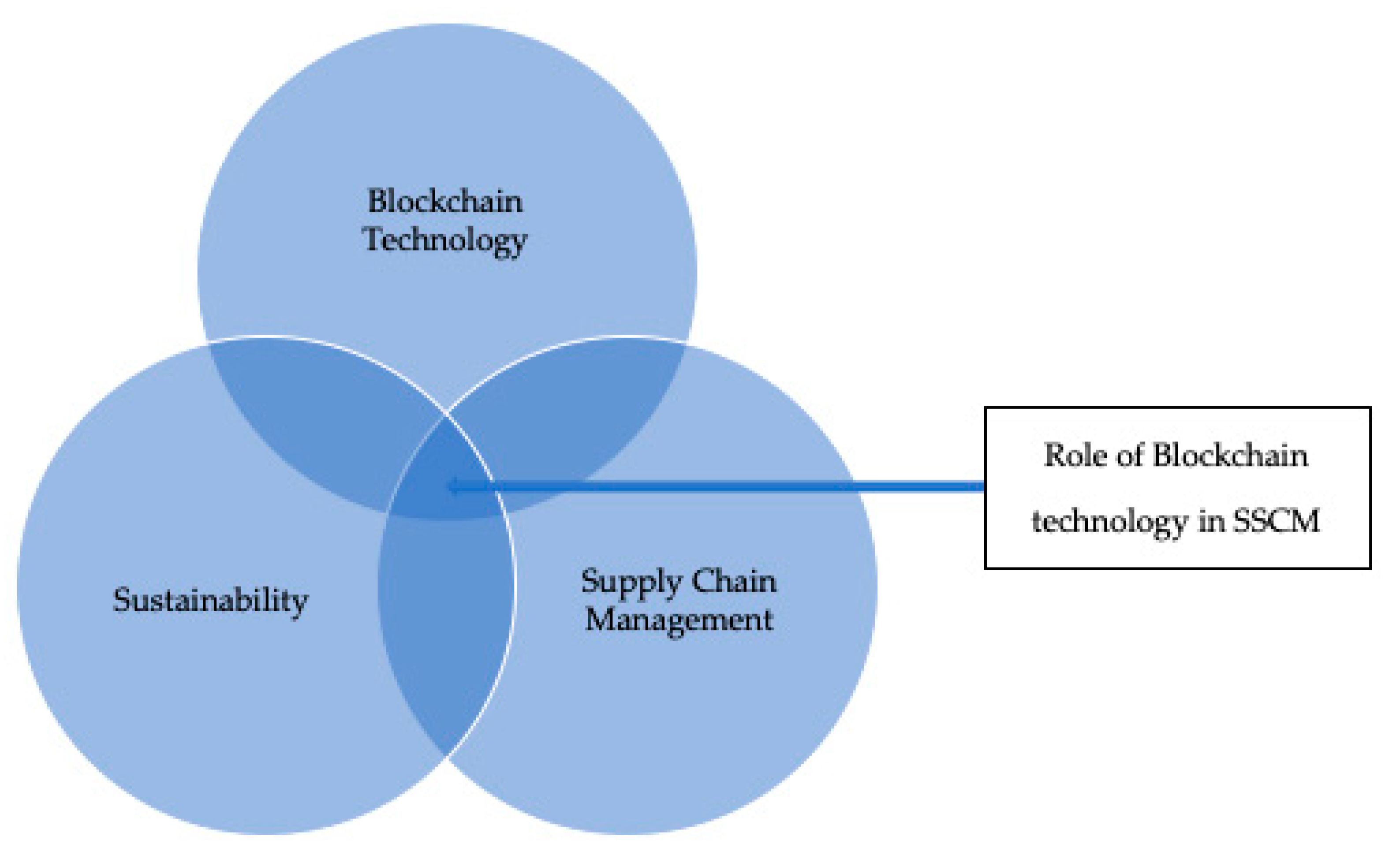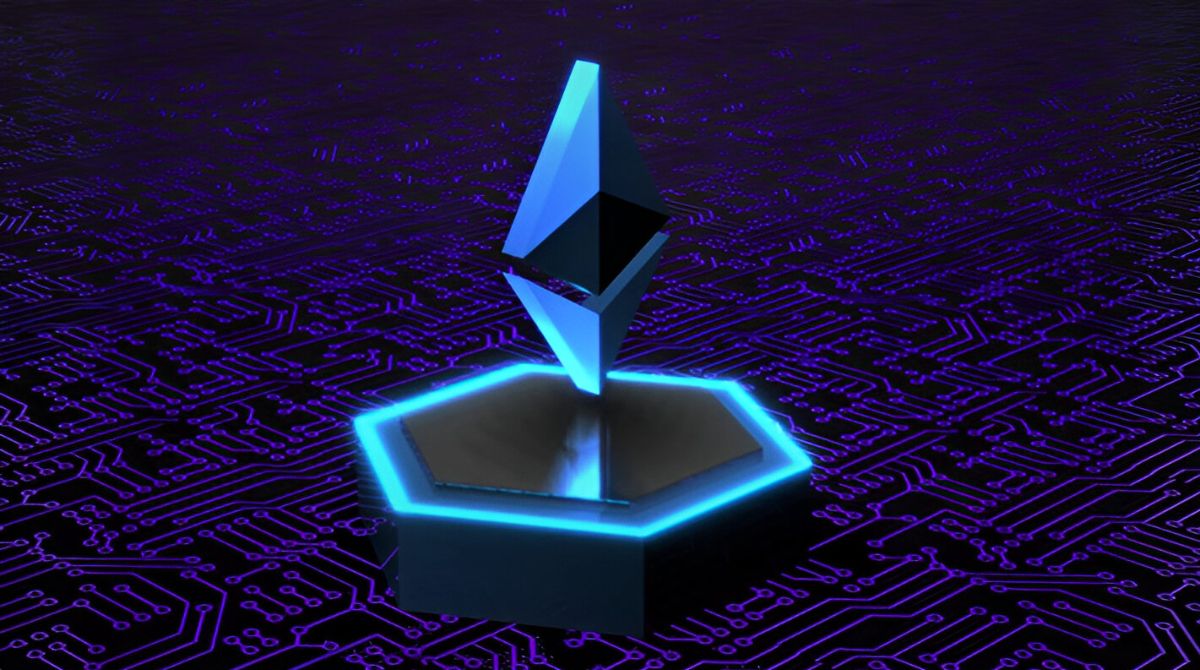Introduction
The advent of blockchain technology has revolutionized various industries, including finance, supply chain, and healthcare. As this innovative technology continues to gain momentum, there arises a need to understand how it intersects with intellectual property rights. Intellectual property refers to the legal ownership and protection of creations, including patents, trademarks, copyrights, and trade secrets.
The blockchain is a decentralized and distributed ledger that enables secure and transparent transactions. It maintains a permanent record of every transaction, making it difficult to alter or manipulate data. This technology has the potential to disrupt traditional systems of intellectual property protection and management. By leveraging blockchain, intellectual property rights can be securely stored, verified, and transferred without the need for intermediaries.
However, classifying and protecting intellectual property rights on the blockchain pose unique challenges. The decentralized nature of the blockchain raises questions regarding jurisdiction, enforcement, and ownership. Moreover, there is a need to strike a balance between the transparency and immutability of blockchain technology and the confidentiality and exclusivity associated with intellectual property rights.
In this article, we will explore the classification of intellectual property rights on the blockchain and examine the implications for copyrights, trademarks, patents, and trade secrets. We will delve into the challenges and considerations that arise in implementing intellectual property rights on the blockchain. By gaining a deeper understanding of these issues, we can navigate the evolving landscape of intellectual property rights in the digital age.
Intellectual Property Rights
Intellectual property rights (IPR) are legal rights that are granted to individuals or organizations for their intellectual creations or inventions. These rights provide exclusive ownership and control over intangible assets, allowing creators and inventors to protect their work and reap the benefits of their creativity and innovation. There are four main types of intellectual property rights: copyrights, trademarks, patents, and trade secrets.
Copyrights protect original works of authorship, such as literary, artistic, and musical creations. They give creators the exclusive right to reproduce, distribute, display, and perform their work. Trademarks, on the other hand, are symbols, names, or designs that distinguish goods or services from those of others. They help consumers identify and associate specific brands with certain qualities or attributes.
Patents are granted to inventors to protect new inventions, processes, or methods that are novel, useful, and non-obvious. They provide creators with exclusive rights to manufacture, use, or sell their inventions for a limited period of time. Trade secrets, on the other hand, are confidential business information that gives a competitive advantage to the owner. They can include formulas, recipes, customer lists, and manufacturing processes.
Intellectual property rights are crucial in fostering innovation, encouraging creativity, and promoting economic growth. They incentivize individuals and organizations to invest time, resources, and talent into developing new ideas, products, and services. By granting exclusive rights, intellectual property laws create a framework for fair competition and reward creators for their contributions to society.
However, with the rise of digital technologies, the traditional systems of intellectual property rights face new challenges. The ease of digital replication and distribution has led to widespread copyright infringement, while the global marketplace has made it challenging to protect trademarks across borders. In addition, the complexity and technical nature of patents can hinder innovation and stifle progress. These challenges call for innovative solutions that can secure and streamline intellectual property rights in the digital age.
The Blockchain Technology
The blockchain is a transformative technology that enables secure and transparent transactions without the need for intermediaries. It is essentially a decentralized and distributed digital ledger that records transactions across multiple computers or nodes. Each transaction is grouped into a block, which is then added to the chain in a permanent and immutable manner.
The blockchain operates on a consensus mechanism, where a network of participants validates and approves transactions. This consensus mechanism, often referred to as Proof of Work or Proof of Stake, ensures the integrity and trustworthiness of the data on the blockchain. Once a transaction is added to the blockchain, it becomes nearly impossible to modify or tamper with, providing a high level of security and transparency.
The blockchain technology has gained popularity due to its potential to revolutionize various industries. In finance, blockchain-based cryptocurrencies, such as Bitcoin, have emerged as alternative digital currencies that offer fast, secure, and decentralized transactions. In supply chain management, blockchain can enhance traceability and transparency by providing a verifiable record of each step in the supply chain process. In healthcare, it can improve data interoperability and patient privacy by securely storing and sharing medical records.
One of the key features of the blockchain is its ability to eliminate the need for intermediaries, such as banks, lawyers, or government agencies, in verifying and facilitating transactions. This not only reduces costs and delays but also enhances efficiency and trust in the system. By removing the centralized authority, the blockchain empowers individuals and organizations to have greater control over their data and assets.
However, the decentralized nature of the blockchain also presents challenges. The absence of a central authority raises questions about jurisdiction, legal frameworks, and dispute resolution mechanisms. Furthermore, the permanent and immutable nature of the blockchain means that any errors or fraudulent transactions cannot be easily rectified. These challenges require careful consideration and adaptation of existing legal and regulatory frameworks to accommodate the nuances of blockchain technology.
Intellectual Rights on the Blockchain
The blockchain technology has the potential to revolutionize the way we manage and protect intellectual property rights. By leveraging the immutability, transparency, and decentralized nature of the blockchain, intellectual property owners can ensure the integrity and security of their creations. Here, we will explore the implications of blockchain on copyrights, trademarks, patents, and trade secrets.
Copyrights on the Blockchain: With the blockchain, creators can register their original works on a public ledger, providing proof of ownership and existence. This allows for easy verification and enforcement of copyrights, as the immutable nature of the blockchain acts as a timestamp and record of authorship. Additionally, smart contracts can be used to automate licensing and royalty payments, ensuring fair compensation for creators when their works are used.
Trademarks on the Blockchain: Blockchain technology can provide a secure and reliable platform for trademark registration and management. By recording trademarks on the blockchain, businesses can establish a verifiable and tamper-proof record of their brand identity. This can help prevent infringement and counterfeiting, as well as streamline the process of trademark searches and enforcement. Additionally, blockchain-based systems can facilitate the transfer of trademark rights and licensing agreements.
Patents on the Blockchain: The blockchain has the potential to revolutionize the patent system by providing a transparent and immutable record of inventions. By registering patents on the blockchain, inventors can establish priority and prove the originality of their inventions. This can simplify the patent application process, as well as provide a trusted source for prior art searches. Moreover, smart contracts can be used to automate licensing and royalty agreements, ensuring that inventors are fairly compensated for the use of their patented technologies.
Trade Secrets on the Blockchain: Blockchain technology can enhance the protection of trade secrets by providing a secure and auditable platform for storing confidential information. Trade secrets can be encrypted and stored on the blockchain, ensuring that only authorized parties can access the information. The decentralized nature of the blockchain reduces the risk of data breaches and insider threats, as there is no central authority that can be compromised. Additionally, smart contracts can be used to enforce confidentiality agreements and track the use of trade secret information.
While the blockchain offers significant benefits for managing intellectual property rights, there are challenges and considerations that need to be addressed. These include issues of jurisdiction, interoperability with existing legal frameworks, and the balance between transparency and confidentiality. Furthermore, education and awareness about the benefits and risks of using blockchain for intellectual property rights are crucial for widespread adoption and acceptance.
Copyright on the Blockchain
Copyright is a fundamental aspect of intellectual property that protects original creative works, such as literary, artistic, and musical creations. With the advent of blockchain technology, copyright management and protection can be revolutionized. The blockchain provides a secure, transparent, and immutable platform for registering, licensing, and enforcing copyrights.
One of the key advantages of leveraging the blockchain for copyright is the ability to establish an indisputable proof of ownership and existence. By registering creative works on the blockchain, creators can create a timestamped and tamper-proof record of their work’s creation. This record serves as evidence in case of infringement disputes, making it easier to prove ownership and authorship.
In addition to proof of ownership, blockchain technology enables efficient licensing and royalty management. Smart contracts, which are self-executing contracts stored on the blockchain, can automate license agreements and royalty payments. This ensures that creators receive fair compensation for the use of their copyrighted works without relying on intermediaries or third-party collection societies.
The transparency of the blockchain also enhances the transparency of licensing and royalty distribution. Anyone can access the public blockchain to verify the ownership and licensing terms associated with a particular work. This transparency reduces disputes and promotes trust between licensors and licensees.
While the blockchain offers numerous benefits for copyright management, there are challenges and considerations that need to be addressed. One such challenge is the issue of jurisdiction. Since the blockchain is borderless, it becomes important to determine which legal jurisdiction governs the copyright. Additionally, reconciling blockchain-based copyright systems with existing legal frameworks poses a challenge. Adaptation and harmonization of laws and regulations are necessary to ensure that blockchain-registered copyrights are recognized and enforceable.
Furthermore, privacy and confidentiality must be considered when registering copyrighted works on the blockchain. While the blockchain is transparent, it may be necessary to protect sensitive information, such as unpublished manuscripts or confidential drafts. Encryption techniques and selective visibility can address this concern and strike a balance between transparency and confidentiality.
Overall, the blockchain has the potential to revolutionize copyright management, providing creators with an efficient, transparent, and secure platform for protecting and monetizing their works. With the continued evolution of blockchain technology and the development of legal frameworks to support it, blockchain-based copyright systems can become an integral part of the intellectual property landscape.
Trademarks on the Blockchain
Trademarks play a crucial role in distinguishing goods or services and protecting the identity of brands. The emergence of blockchain technology offers innovative solutions for trademark registration, management, and enforcement. By leveraging the transparency, immutability, and decentralized nature of the blockchain, trademarks can be securely recorded and protected.
One of the key benefits of using the blockchain for trademarks is the ability to establish a verifiable and tamper-proof record of brand identity. Trademark registration on the blockchain provides a timestamped and immutable proof of ownership, making it easy to demonstrate priority and protect against infringement. This not only simplifies the registration process but also strengthens the credibility of trademark claims.
With the transparency of the blockchain, stakeholders can easily access the public ledger to verify the ownership and status of trademarks. This transparency enables efficient trademark searches, reducing the risk of conflicts and infringement. Furthermore, the decentralized nature of the blockchain eliminates the need for intermediaries, such as trademark offices or registrars, streamlining the registration and renewal process.
Smart contracts, which are self-executing contracts stored on the blockchain, can also play a significant role in trademark licensing and enforcement. These contracts can automate licensing agreements, ensuring that trademark owners receive fair compensation and that licensees adhere to the terms and conditions. By eliminating manual processes and reducing the reliance on third-party intermediaries, smart contracts enhance the efficiency and accuracy of trademark licensing.
Another advantage of utilizing the blockchain for trademarks is global protection and enforcement. Trademarks registered on the blockchain are not tied to any specific jurisdiction, making them accessible and enforceable worldwide. This aspect is particularly valuable in the digital era, where online platforms transcend borders and trademark infringement can occur on a global scale.
Challenges related to trademarks on the blockchain include legal considerations and harmonization of laws. Trademark laws vary across jurisdictions, and adapting traditional trademark frameworks to accommodate blockchain-based trademarks requires careful consideration. Cooperation between legal systems and stakeholders is necessary to ensure that blockchain-registered trademarks are recognized and enforceable.
Furthermore, confidentiality and privacy issues can arise when registering trademarks on the blockchain. Not all trademark-related information may be suitable for public visibility. Encryption techniques and selective visibility can address these concerns, allowing trademark owners to protect sensitive information while still benefiting from the transparency and security offered by the blockchain.
Overall, leveraging blockchain technology for trademarks has the potential to streamline the registration process, enhance trademark protection, and facilitate global enforcement. By harnessing the immutability and transparency of the blockchain, trademark owners can establish a secure and reliable record of their brand identity, reduce the risk of infringement, and create efficient licensing mechanisms.
Patents on the Blockchain
Patents are vital for protecting inventions and encouraging innovation. The integration of blockchain technology offers new possibilities for patent management and enforcement. By leveraging the immutability, transparency, and decentralized nature of the blockchain, patents can be securely recorded, verified, and licensed.
One of the key advantages of utilizing the blockchain for patents is the ability to establish a tamper-proof record of invention disclosure, priority, and ownership. By registering patents on the blockchain, inventors can create an immutable and timestamped proof of their innovative ideas. This feature simplifies the patent application process and strengthens the credibility of patent claims.
The transparency of the blockchain enhances the patent ecosystem by enabling easy access to public patent records. Stakeholders can verify the existence and status of patents, reducing the risk of duplicate or conflicting inventions. This transparency also facilitates prior art searches, leading to more accurate and efficient examination of patent applications.
Smart contracts, which are self-executing contracts stored on the blockchain, can automate licensing and royalty agreements for patented technologies. These contracts ensure fair and transparent compensation for licensees, while also simplifying the licensing process for patent owners. By removing the need for intermediaries and manual administrative tasks, smart contracts enhance the efficiency and accuracy of patent licensing.
The decentralized nature of the blockchain offers a global platform for patent protection and enforcement. Blockchain-based patents are not limited to specific jurisdictions, enabling worldwide recognition and enforcement. This aspect is particularly valuable in today’s interconnected global market, where inventions and ideas can be shared and utilized across borders.
Challenges associated with patents on the blockchain include legal considerations and compatibility with existing patent systems. Patent laws and regulations differ across jurisdictions, and harmonization efforts are needed to ensure that blockchain-based patents are recognized and enforceable worldwide. Collaboration between patent offices and legal experts is crucial to adapt traditional patent frameworks to the digital age.
Confidentiality is another important consideration when registering patents on the blockchain. Some patent-related information may be sensitive and require protection. Encryption methods and selective visibility can be employed to safeguard confidential details while still benefiting from the transparency and security provided by the blockchain.
Overall, leveraging blockchain technology for patents holds great potential in streamlining the patent process, enhancing patent protection, and promoting global innovation. By leveraging the immutability and transparency of the blockchain, inventors can establish a secure and reliable record of their inventions, simplify licensing agreements, and foster a thriving environment for technological advancements.
Trade Secrets on the Blockchain
Trade secrets are valuable confidential information that provides a competitive advantage to businesses. The integration of blockchain technology offers new possibilities for protecting and managing trade secrets. By leveraging the immutability, transparency, and decentralized nature of the blockchain, businesses can securely record, share, and protect their trade secrets.
One of the key benefits of using the blockchain for trade secrets is the ability to store sensitive information in a tamper-proof and auditable manner. By encrypting trade secrets and recording them on the blockchain, businesses can ensure that only authorized parties can access the confidential information. The transparency and immutability of the blockchain provide an additional layer of security, reducing the risk of data breaches and insider threats.
The decentralized nature of the blockchain eliminates the need for a central authority or database for storing trade secrets. This reduces the risk of trade secret misappropriation or unauthorized access. Instead, the blockchain acts as a distributed ledger, where information is replicated and stored across multiple nodes, making it challenging for malicious actors to manipulate or compromise the data.
Moreover, the transparency of the blockchain can facilitate secure sharing and collaboration of trade secrets. By using smart contracts, businesses can define and enforce confidentiality agreements when sharing trade secret information with partners or suppliers. This ensures that the sensitive information remains protected and secure, with a clear audit trail of access and usage.
However, there are challenges and considerations when using the blockchain for trade secrets. One challenge is determining the appropriate level of visibility or selective visibility for the shared trade secrets on the blockchain. Not all trade secret information can be made public or visible to all participants. Encrypted and restricted access control mechanisms need to be implemented to ensure that sensitive trade secrets are only accessible to authorized parties.
Additionally, legal considerations need to be addressed, such as jurisdiction and specific trade secret laws. The laws surrounding trade secrets vary across jurisdictions, and integrating blockchain technology requires careful navigation and adaptation to ensure compliance with existing legal frameworks. Collaboration between legal experts, businesses, and regulatory bodies is important to establish guidelines and standards for protecting trade secrets on the blockchain.
In summary, leveraging blockchain technology for trade secrets presents opportunities to enhance security, confidentiality, and collaboration. By employing encryption, selective visibility, and smart contracts, businesses can securely store, share, and protect their valuable trade secret information in a decentralized and tamper-proof manner. While there are challenges to overcome, the potential benefits of blockchain technology for trade secrets make it an area of considerable interest and exploration.
Challenges and Considerations
While the integration of blockchain technology offers numerous benefits for intellectual property rights, there are several challenges and considerations that need to be addressed to effectively implement and navigate the intersection of blockchain and intellectual property. These challenges include legal, technical, and practical considerations that require careful thought and adaptation.
Legal Considerations: One of the primary challenges is reconciling blockchain-based systems with existing legal frameworks. Intellectual property laws and regulations vary across jurisdictions, and adapting these laws to accommodate the decentralized and borderless nature of the blockchain presents a complex task. Collaboration between legal experts, policymakers, and industry stakeholders is crucial to ensure that blockchain-based intellectual property systems are legally recognized and enforceable.
Technical Challenges: There are technical challenges that arise in integrating intellectual property rights with blockchain technology. One of the key challenges is scalability, as the blockchain’s capacity to handle a large volume of transactions is currently limited. Scalability issues need to be addressed to ensure that blockchain-based systems can handle the potential influx of intellectual property registrations and transactions.
Data Privacy: Protecting sensitive information is essential, especially when dealing with intellectual property rights. While the blockchain is transparent, confidential information such as unpublished works or trade secrets may need to be kept private. Encryption techniques and selective visibility can address these concerns, allowing certain information to remain confidential while still benefiting from the transparency and security offered by the blockchain.
Interoperability: Interoperability and compatibility with existing systems and databases pose a challenge when integrating blockchain technology into traditional intellectual property processes. Ensuring that blockchain-based systems can seamlessly communicate and interact with existing databases and systems is crucial for a smooth transition and widespread adoption of blockchain in the intellectual property landscape.
User Adoption and Education: While blockchain technology has gained attention and recognition, user adoption and awareness remain key challenges. Many individuals and organizations may be unfamiliar with blockchain and its potential applications in intellectual property rights management. Providing educational resources and fostering awareness about the benefits and risks of blockchain technology can facilitate its adoption and integration into the intellectual property ecosystem.
Regulatory Compliance: Compliance with regulations and standards is vital for the acceptance and adoption of blockchain-based systems. A clear regulatory framework is needed to ensure compliance with intellectual property laws, consumer protection, data privacy, and security. Cooperation between regulatory bodies, industry stakeholders, and legal experts is essential to establish guidelines and standards for blockchain-based intellectual property systems.
In addressing these challenges and considerations, it is important to strike a balance between the benefits of blockchain technology and the protection and enforcement of intellectual property rights. Collaboration and open dialogue among stakeholders are necessary to develop practical solutions that promote innovation, protect creators’ rights, and maintain the integrity of intellectual property systems in the digital age.
Conclusion
Blockchain technology offers immense potential to revolutionize the management and protection of intellectual property rights. By leveraging its core features of immutability, transparency, and decentralization, the blockchain can enhance the integrity, security, and efficiency of copyright, trademark, patent, and trade secret systems.
The integration of blockchain technology provides creators with the ability to establish an indisputable proof of ownership, existence, and priority. It simplifies the registration process, strengthens credibility, and promotes trust in the intellectual property ecosystem. In addition, blockchain-based systems enable efficient licensing, royalty management, and distribution, ensuring fair compensation and transparency for creators.
Trademarks can be securely recorded on the blockchain, establishing verifiable brand identity and simplifying the process of trademark searches and enforcement. Patents can benefit from the blockchain’s ability to establish tamper-proof records, improve prior art searches, and facilitate licensing agreements through smart contracts. Trade secrets can be protected through encryption and secure storage on the blockchain, enabling controlled access and collaboration while preserving confidentiality.
However, integrating blockchain technology into intellectual property systems presents challenges and considerations that need to be addressed. Legal frameworks, technical scalability, data privacy, interoperability, user adoption, and regulatory compliance are among the key concerns that require collaboration, adaptation, and education.
In navigating these challenges, it is important to strike a balance between the benefits of blockchain technology and the protection and enforcement of intellectual property rights. Collaboration and open dialogue among stakeholders are crucial to develop practical solutions that foster innovation, protect creators’ rights, and maintain the integrity of intellectual property systems in the digital age.
As blockchain technology continues to evolve and mature, it holds the promise of reshaping the landscape of intellectual property rights. It presents an opportunity to create more efficient, transparent, and globally accessible systems that benefit creators, inventors, businesses, and consumers alike. By embracing the potential of blockchain technology, we can unlock new possibilities and drive innovation in intellectual property protection, management, and enforcement.

























